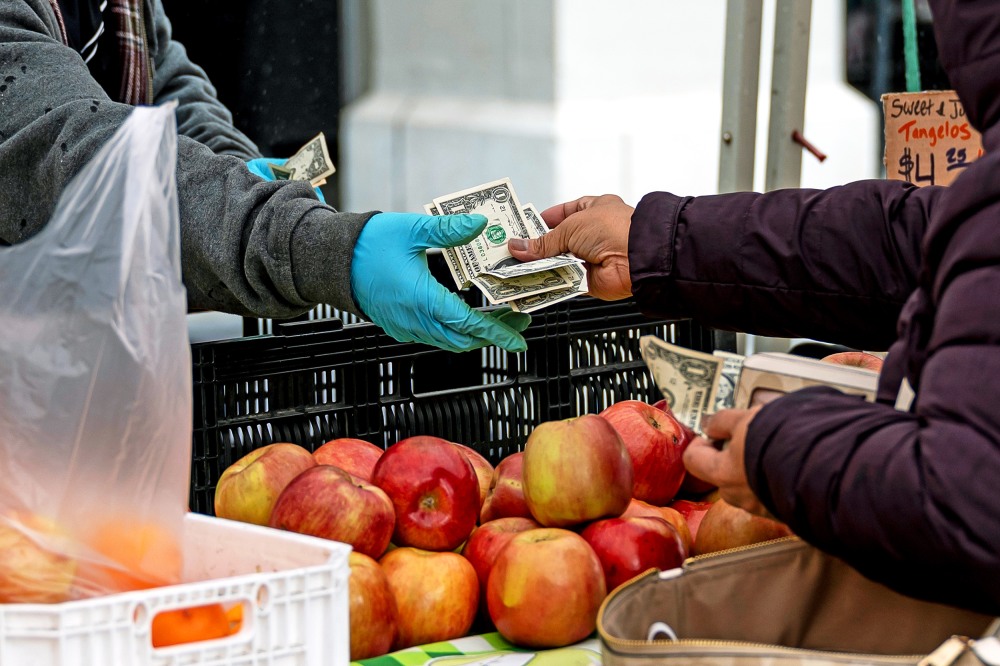
This article is more than
7 year oldUS economy growing at annual rate of 4.1%, fastest pace in four years

The US economy roared ahead in the second quarter of 2018, growing at an annual rate of 4.1%, its fastest pace in four years, the commerce department announced on Friday.
The growth will be a major boon for the Trump administration, which pushed through $1.5tn in tax cuts at the start of the year with a promise that they would be paid for by economic growth.
Ahead of the announcement on Thursday, Donald Trump teased that good news could be coming. Breaking with a tradition of presidents refraining from commenting on market sensitive government releases ahead of their release, the president told a rally in Illinois: “Somebody actually predicted today 5.3[% growth]. I don’t think that’s going to happen ... if it has a four in front of it, we’re happy.”
But economists warned the growth spurt may be unsustainable and the evidence so far is that the benefits of the mini-boom have disproportionately gone to the wealthiest Americans.
The last time the economy expanded at a comparable pace was in 2014, when growth hit 5.2% in the third quarter.
The commerce department report showed the economic boost was driven by rising consumer spending, exports and business investment over the quarter. Consumer spending grew at an annual rate of 4% in the last quarter, up from just 0.5% in January to March. Business investment was 7.3% higher.
The pace of growth may be difficult to maintain – the economy grew 2.3% in the whole of 2017, and GDP growth hasn’t crossed the 3% mark for a whole year in 14 years. In the first quarter of the year gross domestic product (GDP) – the widest measure of the economy – grew at an annual rate of just 2.2%, meaning the average for the six months is 3.1%.
The second quarter was a sweet spot for the US economy, coming after Trump’s massive tax cuts but before his tariffs rattled global trade.
It is still too early to gauge the ultimate impact of the tax cuts but there are worrying signs that the package, meant to spur investment and hiring, has instead gone straight into the pockets of investors.
In May, American companies announced a record $201bn in stock buybacks – where companies buy their own shares in order to boost the share price. The S&P 500 companies are set to repurchase as much as $800bn in stock this year, a new record.
But the majority of the benefit of those buybacks will go to the riches Americans. Some 84% of all stocks owned by Americans belong to the wealthiest 10% of households and the top 1% of households own nearly 38% of all stock, according to research by New York University economist Edward Wolff.
In the meantime wage growth has remained lackluster, a trend that has continued unabated since the end of the recession and has so far been unaffected by the Trump presidency. Tax revenues have fallen and the US budget deficit is on course surpass $1tn by 2020, two years sooner than previously estimated, according to the Congressional Budget Office.
Josh Bivens, director of research at the Economic Policy Institute, said it was difficult to assess the state of the US economy from one quarter’s GDP figures. “Tax cuts have provided a bit of stimulus, particularly for people who own a lot of stock and are paying less tax,” he said.
Bivens said the impact of the cuts had yet to be seen in the wider economy. “Low wages are still the biggest puzzle in this economy,” he said.




